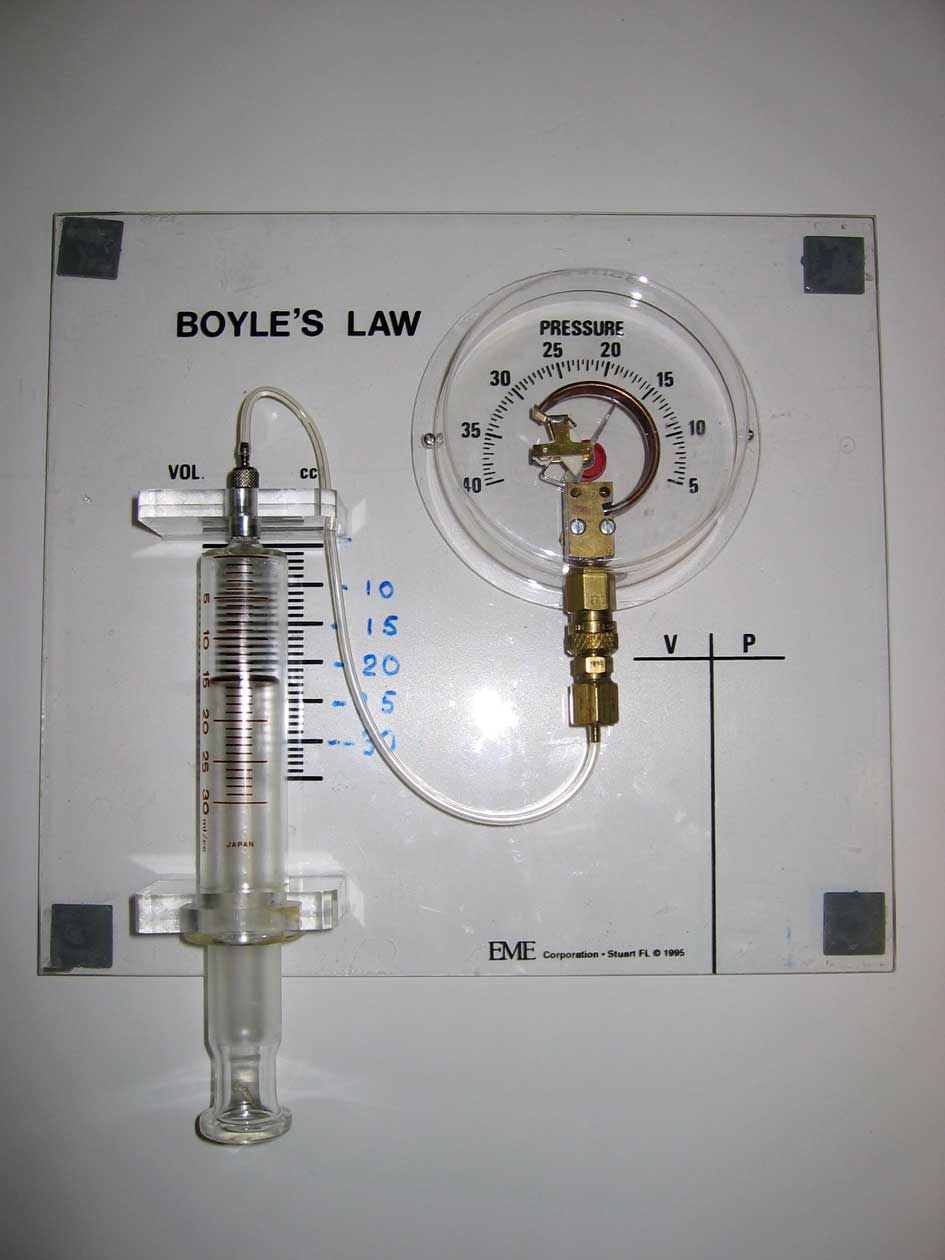Exploring the interdependence of gas pressure and volume - Boyle's Law
 The pressure of a fixed quantity of gas at a fixed temperature is measured as the volume of the gas is varied.
The pressure of a fixed quantity of gas at a fixed temperature is measured as the volume of the gas is varied.
Ingredients: gas pressure gauge, syringe
Procedure: A complete recipe follows.
1. Add a volume of gas to syringe.
2. Vary volume of gas in the syringe and record pressure at each volume.
3. Analyze dependence of pressure on volume for the fixed quantity of gas at a fixed temperature.
Understanding: For a fixed quantity of gas at a fixed temperature, the pressure of the gas is inversely proportional to the volume of the gas. Alternatively stated, the pressure times the volume is a constant. That relation is known as Boyle's Law, named for the great English scientists Robert Boyle (1627-1691).
The Columbia Encyclopedia (sixth edition) tells us that "Boyle is often referred to as the father of modern chemistry; he separated chemistry from alchemy and gave the first precise definitions of a chemical element, a chemical reaction, and chemical analysis. He also made studies of the calcination of metals, combustion, acids and bases, the nature of colors, and the propagation of sound. Although he was especially noted for his experimental work, Boyle also contributed to physical theory, supporting an early form of the atomic theory of matter, which he called the corpuscular philosophy, and using it to explain many of his experimental results."
Boyle's Rocket
Question: We have seen a recipe for sugar rocket fuel. How might we propel a rocket by exploiting Boyle's Law? What might be the downside of a rocket with a propulsion system based solely on the exploitation of Boyle's Law?